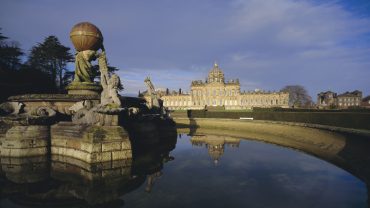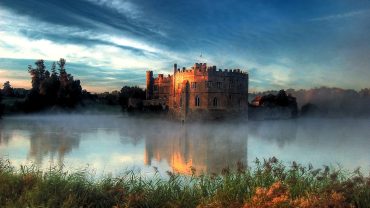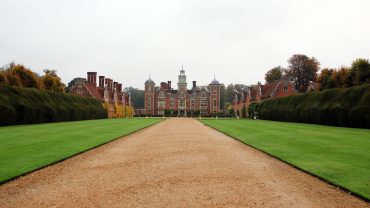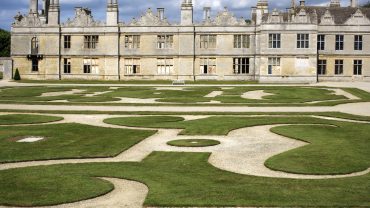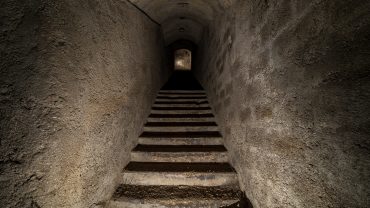London’s most famous bridges are more than simply crossings over the Thames, they are enduring symbols of the city’s evolution from a small Roman outpost into a global centre of business, culture, sport and science.
A city rich in history, London is renowned for its distinctive architecture and iconic landmarks. Among these, the famous bridges in London stand out not only for their impressive designs but also for their crucial role in the city’s growth and connectivity. Spanning the River Thames, these bridges have long served as vital links, facilitating the movement of people and goods, horses, carriages, cars and trains, as well as fostering economic development. From early wooden crossings to grand stone and steel structures, London’s bridges have been instrumental in shaping the city’s landscape and daily life.
Are you ready to span centuries of secrets and stories? Let’s take a trip around the most iconic bridges in London as we bridge the gap between past and present.
The History of Famous Bridges in London

Engraving of the Old London Bridge c. 17th century (Credit: duncan1890 via Getty Images)
The earliest bridges in London date back to Roman times, with the first timber bridge constructed around 50 AD to connect the settlement of Londinium with port facilities on the south bank of the Thames, or as the Romans called it, the Tamesis. Over time, these simple crossings evolved into more permanent and complex structures, such as the medieval London Bridge, built between 1176 and 1209, which became a bustling thoroughfare lined with shops and homes. These bridges were essential not only for trade and transport but also played significant roles in the social and political life of the growing city.
By the late medieval period it was clear that one bridge could scarcely serve a rapidly evolving city, and so new crossings followed. In 1750 Westminster Bridge opened as the first crossing downstream of London Bridge in over six hundred years, its seven stone arches designed by Charles Labelye to carry carriages and foot traffic across the river. The Victorian era then ushered in railway and ornamental bridges, such as Hungerford and Charing Cross for trains, and the neo-Gothic Tower Bridge – the most iconic bridge in London – in 1894, whose bascules still lift for tall ships, symbolised the marriage of function and festivity on the Thames.
Each new bridge eased congestion, linked burgeoning suburbs, and showcased advances in engineering – from wrought iron to hydraulic machinery – cementing London’s most famous bridges as the arteries of the city.
London Bridge

London Bridge, one of the most important in the city (Credit: Howard Kingsnorth via Getty Images)
One of the city’s most important bridges, the original London Bridge was a wooden Roman structure. The medieval stone London Bridge, constructed between 1176 and 1209, was remarkable for its nineteen arches and the buildings that lined its span, including shops and homes, some reaching seven stories high. For centuries, it was London’s only bridge over the Thames, serving as a vital artery for commerce and daily life. The old bridge was replaced in the 1830s, and lasted until the 1960s when it was dismantled and sold to an American entrepreneur who shipped it to Lake Havasu City in Arizona where it was painstakingly reassembled over the Bridgewater Channel.
The latest incarnation of one of London’s famous bridges was opened by HM Queen Elizabeth II in March 1973. The prestressed concrete box girder bridge is 269 metres long, 32 metres wide and is traversed by thousands of people every day.
Westminster Bridge

Westminster Bridge in the shadow of the Houses of Parliament (Credit: mammuth via Getty Images)
Westminster Bridge, one of London’s most famous river crossings, was first completed in 1750. It was designed by Swiss engineer and mathematician Charles Labelye to provide a much-needed link between the boroughs of Westminster and Lambeth. Before its construction, London Bridge was the only bridge across the Thames in central London, making Westminster Bridge a transformative addition for the city’s connectivity and growth. Due to structural problems, the original bridge was replaced by the current cast-iron structure, designed by Thomas Page and opened in 1862, featuring seven elegant arches and Gothic detailing by Charles Barry to complement the nearby Houses of Parliament.
An iconic bridge in London, Westminster Bridge is 250 metres long and 26 metres wide. It was a contributing factor to the connection of the West End with South London as well as helping to ease the burden of goods vehicles coming into London from the ports in East Sussex and Kent.
Waterloo Bridge

Waterloo Bridge, designed by Sir Giles Gilbert Scott (Credit: by Andrea Pucci via Getty Images)
Waterloo Bridge was first opened in 1817, originally named Strand Bridge before being renamed to commemorate the British victory at the Battle of Waterloo in 1815. Designed by John Rennie, the original bridge – not only one of the most famous bridges in London but also one of its most beautiful – was celebrated for its nine elegant granite arches and Doric columns, and was considered to be one of the noblest bridges in Europe. Over time, structural issues caused by river flow and increased traffic led to its demolition in the 1930s, and the current bridge, designed by Sir Giles Gilbert Scott, was opened in 1942. It is 370 metres long and 24 metres wide.
A fascinating fact is that the present Waterloo Bridge is often called “The Ladies’ Bridge” because much of its construction during World War II was carried out by women, making it a unique symbol of resilience and the vital role women played in London’s wartime history.
Cannon Street Railway Bridge

Cannon Street Railway Bridge, once the world's widest railway bridge (Credit: OlegAlbinsky via Getty Images)
It may not be the most iconic bridge in London but it’s certainly one of the most historically significant. Cannon Street Railway Bridge, designed by Sir John Hawkshaw, opened in 1866 to carry trains over the Thames into the heart of the City of London, connecting with the newly built Cannon Street Station. Originally named “Alexandra Bridge” in honor of Princess Alexandra of Denmark, the bridge was constructed with five spans supported by cast iron Doric pillars and included two footpaths – one for the public (with a toll) and one for railway staff. The bridge was widened in the late nineteenth century to accommodate increased rail traffic, making it the widest railway bridge in the world at that time.
The two stunning brick towers on the north side conceal massive tanks that once powered the station’s hydraulic lifts. Despite extensive wartime damage and later renovations, the Cannon Street Railway Bridge remains a vital and historic link across the Thames.
Kingston Bridge

Kingston Bridge, one of the oldest of the Thames' crossings (Credit: aislan13 via Getty Images)
Kingston Bridge, spanning the Thames at Kingston upon Thames, has a history stretching back to at least the Anglo-Saxon era, with some sources suggesting a crossing existed as early as the twelfth century or even before the Norman invasion. For over 500 years, the original Kingston crossing was the only bridge between London Bridge and Staines, making it a vital element of the Thames network, and a crucial link for trade and travel, helping Kingston flourish as a medieval market town. The original wooden bridge suffered repeated damage, including destruction during the Wars of the Roses and Wyatt’s Rebellion, and eventually collapsed in part in 1814. The current 116 metre long stone bridge, designed by Edward Lapidge, opened in 1828 and has since been widened to 24 metres and strengthened to accommodate modern traffic, including two cycle lanes.
Millennium Bridge

Millennium Bridge, from the Tate to St. Paul's Cathedral (Credit: Puthipong Worasaran via Getty Images)
One of the newest of London’s famous bridges, the Millennium Bridge, officially known as the London Millennium Footbridge, is a striking 325 metre-long, four metre-wide steel suspension bridge spanning the Thames between St Paul’s Cathedral and the Tate Modern. Construction of the pedestrian bridge began in 1998, and the bridge opened on 10 June 2000 as London’s first new pedestrian bridge in over a century. On its opening day, approximately 80,000 to 100,000 people crossed, but the bridge experienced unexpected and dramatic swaying, earning it the nickname “Wobbly Bridge”. This phenomenon was caused by the synchronised footsteps of pedestrians and the bridge was closed just two days after it opened. It underwent nearly two years of updates and modifications before safely reopening in 2002.
For fans of Harry Potter, it may well be the most iconic bridge in London. In the Half-Blood Prince film, it collapses after being attacked by a pack of Death Eaters!
Holborn Viaduct

Holborn Viaduct is a stunning example of Victorian design and engineering (Credit: undefined undefined via Getty Images)
In the realm of famous bridges, London has many, but Holborn Viaduct remains somewhat off the typical tourist trail, more familiar to London’s commuters than its visitors. Completed in 1869 and designed by William Haywood, the bridge is 430 metres long and 24 metres wide and was built to provide a level crossing over the subterranean River Fleet, connecting Holborn Circus to Newgate Street. This Victorian marvel eliminated the need for carriages to navigate the challenging slopes of Holborn Hill and Snow Hill, easing traffic and modernising the city’s infrastructure. The viaduct is renowned for its ornate cast iron and stonework, with decorative statues and four pavilion staircases linking the upper road to Farringdon Street below.
For a short time in the 1880s, it became the most famous bridge in London. Holborn Viaduct was the site of the world’s first coal-fired power station. In 1882, Thomas Edison opened the Edison Electric Light Station here, pioneering urban electrification and lighting up nearby streets – an innovation that changed city life forever.
Putney Bridge

Putney Bridge, with the 13th century St. Mary's Church at one end (Credit: by Andrea Pucci via Getty Images)
To students of Oxford and Cambridge, Putney Bridge, a Grade II listed structure linking Putney and Fulham across the Thames in west London, is the most famous bridge in London as it’s the starting point of the annual Boat Race. The first permanent bridge on this site opened in 1729, designed by Royal Navy Surveyor Sir Jacob Ackworth and built by local master carpenter Thomas Phillips, replacing a long-standing ferry service.
The first bridge was damaged in a collision with a barge in 1870 and subsequently demolished. The current stone bridge – 270 metres long and 23 metres wide – was designed by Sir Joseph Bazalgette and opened in May 1886. It features five arches and incorporates water pipes beneath its surface as part of Bazalgette’s staggeringly complex sewerage system.
Richmond Bridge

Richmond Bridge, one of the prettiest in London (Credit: GordonBellPhotography via Getty Images)
Richmond Bridge, completed in 1777, is the oldest surviving bridge across the Thames in London and an elegant example of Georgian architecture. Designed by James Paine and Kenton Couse, the Grade I-listed stone arch bridge, known for its distinctive humpbacked shape, created to allow ships to pass beneath its central arch, replaced a ferry service that once connected Richmond and East Twickenham and is thought to have existed since Norman times. Originally, tolls were charged to cross, with the last toll collected in 1859.
A curious fact about one of London’s famous bridges is that it had to be built on the original ferry site because the local landowner refused to let the approach road cross their land, resulting in the steep incline still seen today.
Tower Bridge

Tower Bridge, London's most iconic bridge (Credit: Andrew Thomas via Getty Images)
Unquestionably the most iconic bridge in London and certainly one of the most famous bridges in the world, Tower Bridge was built between 1886 and 1894 to address the city’s booming commercial growth and the need for a new river crossing east of London Bridge. Designed by Sir Horace Jones and engineered by Sir John Wolfe Barry, the bridge features a unique bascule (drawbridge) system that allows ships to pass without disrupting road traffic – a vital innovation for the busy river. Its striking neo-Gothic towers were clad in Cornish granite and Portland stone, blending with the nearby Tower of London and making it one of the city’s most recognisable structures.
The construction of the most famous bridge in London was a massive undertaking, involving more than 70,000 tonnes of concrete sunk into the riverbed for the piers and over 11,000 tonnes of steel used in the walkways and framework, with a total workforce of around 1,200 over the eight-year build. The bridge was officially opened on 30 June 1894 by the Prince and Princess of Wales. Originally, the high-level walkways were little used and gained a reputation for attracting men and women of ill-repute, leading to their closure in 1910. They were later reopened in 1982.
A fascinating and somewhat macabre secret lies beneath the north side of the bridge. A Victorian-era alcove known as Dead Man’s Hole was historically used as a mortuary for bodies recovered from the Thames. The area remained in official use well into the twentieth century, though it’s now sealed off from public access and preserved largely as an eerie historical curiosity.
Today, Tower Bridge remains a fully operational bascule bridge, lifting around eight hundred times a year for river traffic, and stands as a symbol of the city’s historic engineering innovation.



